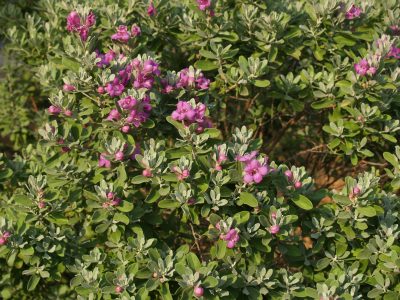Browned leaves on sago palm (cycad).
Thanks to San Antonio gardener Rebecca Savage for two great questions!
First, her sago palm (cycad) has browned leaves. Rebecca says that it faces north and has been in this spot for over five years. This year and last, it turned yellow in the winter and early spring. It had new growth last year after she trimmed off the yellowed stems.
Well, Rebecca, your sago palm is showing frost damage. Although in general, our winters are pretty mild, 2017 and 2018 had some especially long-lasting cold temperatures, which tropical species like your cycad aren’t used to.
You were right to trim off the damaged tissue last year: it won’t recover. But the new growth should be just fine, and it isn’t hard to protect such small, slow-growing plants as your sago palm from frosty temps. If the cold spell is predicted to be brief, simply cover with a blanket or heavy sheet, anchoring the fabric down at the base with bricks or other heavy objects, to make sure no heat escapes from the microclimate you’ve created underneath.
If temperatures are freezing for a longer period of time, you could add a string of Christmas lights to the equation, being careful to provide some sort of frame to hold them, so as not to cause a fire hazard. And be sure to use some of the older-style lights, not the new LED ones, which don’t produce enough heat.
Rebecca’s spineless prickly pear is spotty and a little bleached looking. This appears to be some sort of physical damage, possibly frost, or maybe insect damage, or even hail, that’s now led to open wounds where microbes have invaded and caused some tissue decay.
This opuntia is also severely infested with scale insects which you suffocate with neem oil in the cool of the evening or morning.
Once you notice new growth, remove the new pads, and replant. Unfortunately, the mother plant will not recover.

